Welcome to part two of “Order out of Chaos,” our three-part decluttering series. In this installment, our certified feng shui and decluttering expert Andrea Gerasimo restores the home office of one messy senior editor (namely, me). In the process, she suggests several ways you can make your own home office a saner, more pleasant place to work — from smart bills-and-projects storage to making the room more inviting and conducive to focused work. “It makes sense to set your space up in a way that supports you,” Gerasimo says. Here’s how we took on my space challenges.
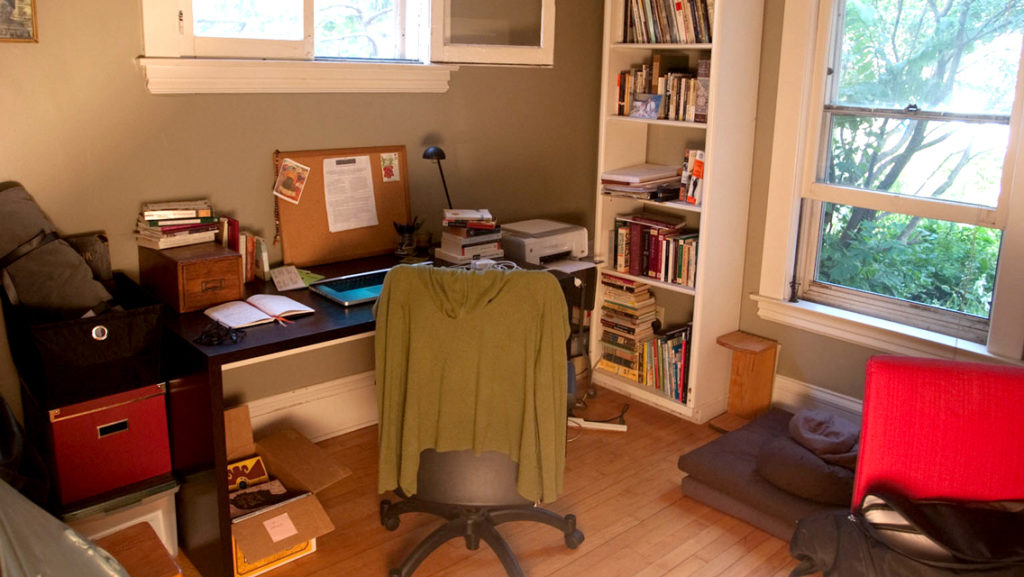
1. The Avoidance Factor
There’s a reason why offices tend toward the cluttered and unlovely, explains Gerasimo: “Almost everybody finds paperwork to be emotionally heavy. Offices tend to evoke feelings of financial stress, obligation and not knowing,” she says — and so they are places we tend to “dump and run.”
This was certainly the case for the home office I share with my husband. In fact, we’d begun referring to it as the Freudian unconscious of the house. The office had become home not just to bills and work-related documents, but our chosen place for items we weren’t sure where else to put. Homeless boxes and piles of books sat around our desks like questions waiting to be answered, something Gerasimo says she sees all the time.
“People tend to keep stress-oriented items like bills and unfinished projects in clear view,” she says. “We’re afraid of forgetting time-sensitive obligations, and so we rely on these things as visual ‘ticklers.’ But instead, they just wind up creating more confusion and clutter.” Ironically, leaving timely documents out often leads to them being forgotten. “I can’t tell you how many times I’ve heard about bills going unpaid because they got lost beneath a pile of ‘things to remember,’” she says.
2. Homeless Stuff
Before we could set up a better organizational system in my office, we needed to address the absence of “receptive space” — a concept Gerasimo says is key in most decluttering efforts. “Right now, all your available storage spaces are full and overflowing onto your surfaces,” she says, “so you don’t have anywhere to put things that don’t need to be on view.”
The evidence: Overstuffed bookshelves. Overflowing file boxes. Piles of bills, paid and unpaid. Random objects needing a home.
3. Reclaimed Real Estate
To create receptive space and introduce functional order, Gerasimo first added three simple items: a large filing cabinet, a recycling bin and a desktop organizer. She also placed some silk flowers on top of the filing cabinet to attract the eye upward and give it a pleasing place to rest (rather than bouncing across the objects spread across the room’s surfaces).
From there, we set about sorting daily necessities from less-regularly used reference materials. We filed, we sorted, we tossed — reclaiming what Gerasimo calls “prime real estate” from a sea of clutter.
This gave us room to put the filing cabinet within reach of the chair and the recycling bin beneath the desk (previously, the nearest bin had been in our back hallway).
The desktop organizer corrals pens and other necessities, the bookends hold current research books, and both are angled to clutter-proof the corners, where energy “tends to stagnate,” Gerasimo says.
Bills have been relocated to a separate, small antique desk (not pictured here), which is now our “financial center.” A blackboard above it broadcasts when individual bills are due.
If you don’t have the option of a separate desk for finances, Gerasimo recommends using transparent project files to collect bills and keep them separated from other projects on your desk surface. “This way, they’re within reach and view, but not harassing you visually while you focus on other projects.”
Normally, Gerasimo prefers to move desks into a “command position” with a clear view of the door, but the size of our shared office precluded that. In such cases, she recommends placing a mirror so that you have a reflected view to any points of entry. “This gives you a sense of security so that you can keep your attention on your work and not feel constantly on guard about what’s going on behind you,” she explains.
4. Big Sigh
Finally, by moving some lower-priority books to storage, we created breathing room on the bookshelves, even making space for some decorative objects. “Packed shelves are visually oppressive,” she says.“Now the eye has a place to rest.” And I have a nice place to pay bills, write, and think.
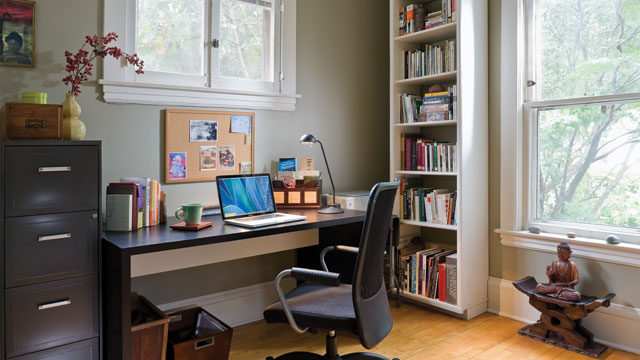

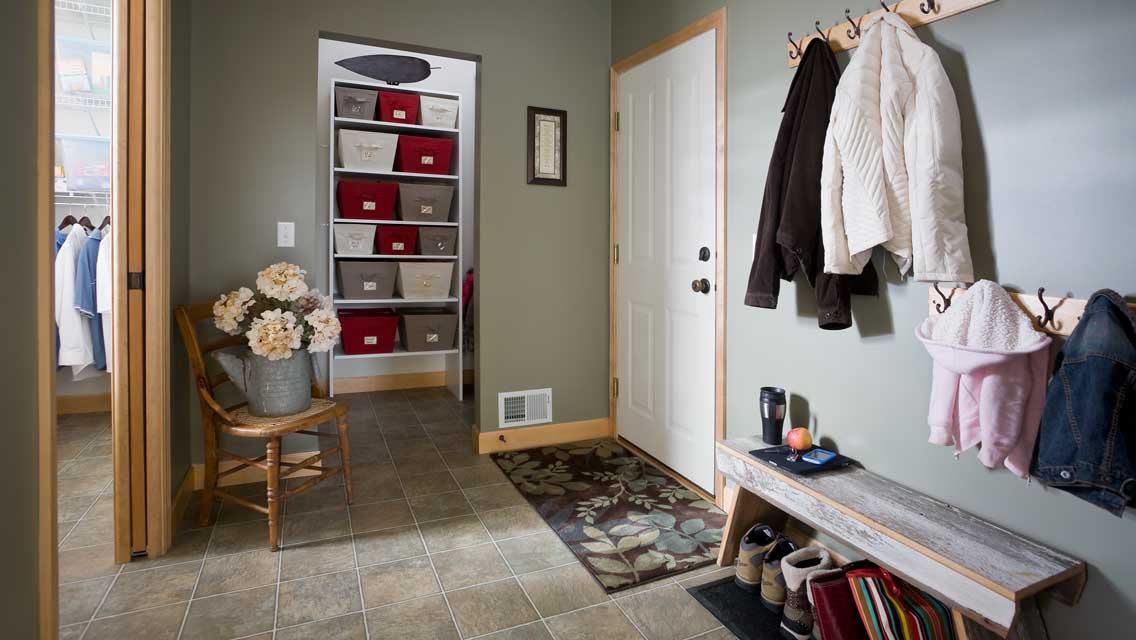
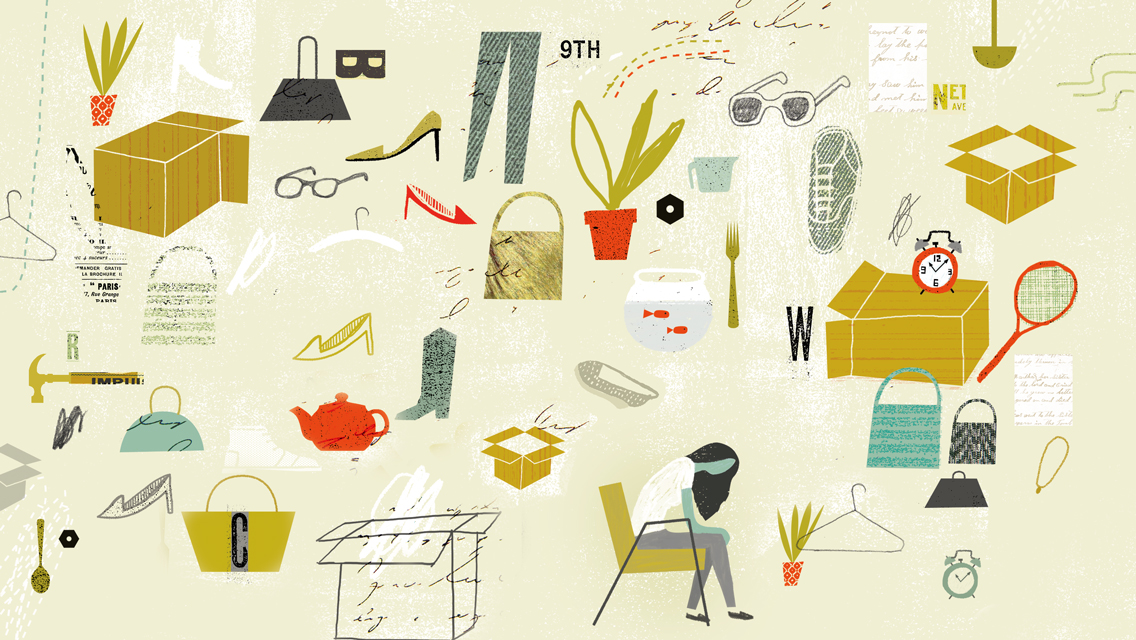
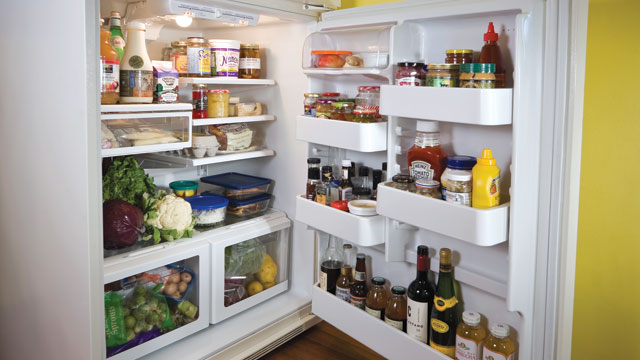
This Post Has 0 Comments